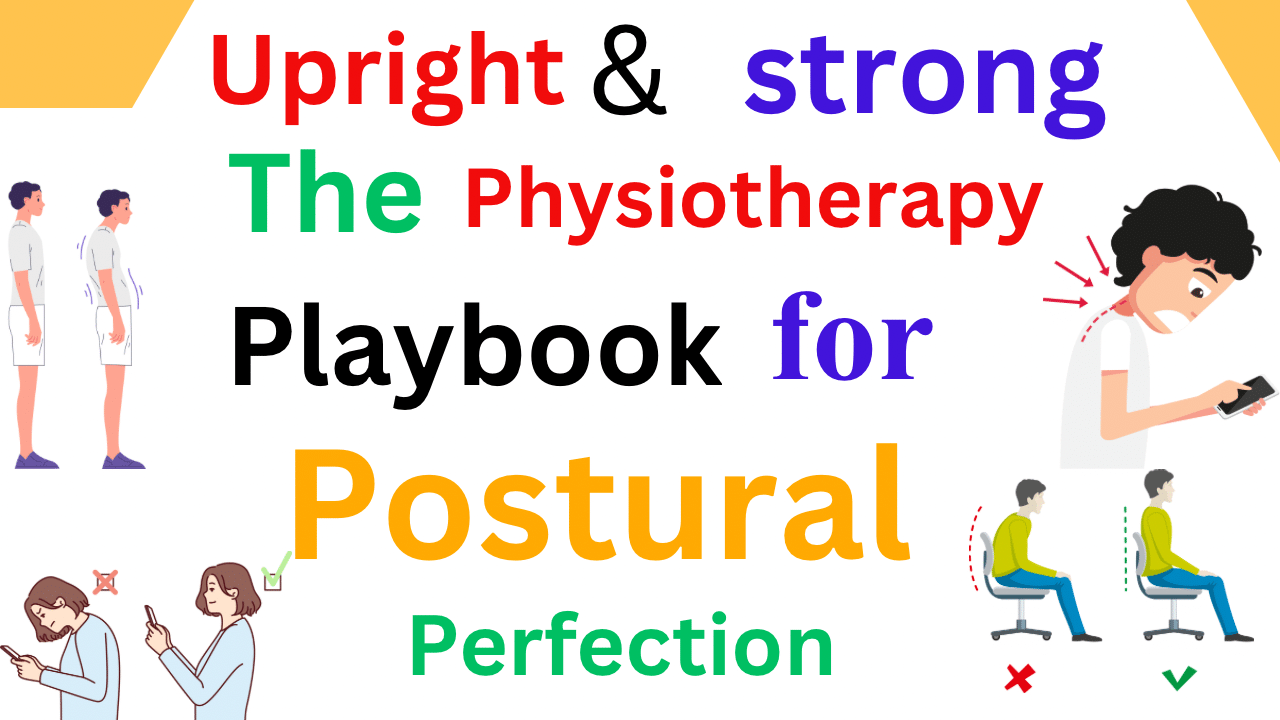Introduction ( The Physiotherapy Playbook for Postural Perfection )
The Physiotherapy Playbook for Postural Perfection – In our increasingly sedentary world, poor posture has become a pervasive problem, often leading to various musculoskeletal issues and discomfort.
The good news is that physiotherapy plays a vital role in addressing postural problems and promoting postural awareness.
This article explores the significance of physiotherapy in maintaining good posture and offers essential do’s and don’ts to help you correct bad posture and improve your overall well-being.
The Importance of Good Posture
Good posture is more than just sitting up straight; it’s about the alignment of your body parts that allows for optimal functioning.
Proper posture is essential for several reasons:
- Reducing Musculoskeletal Pain: Maintaining a neutral spine and alignment of the body’s structures can alleviate pain in the neck, back, shoulders, and hips.
- Improved Breathing: Good posture ensures that your lungs have enough space to expand, promoting better oxygen intake.
- Enhanced Digestion: Proper posture can aid in healthy digestion by reducing pressure on internal organs.
- Boosted Confidence: Good posture exudes confidence and can positively impact your self-esteem and the way others perceive you.
- Preventing Future Health Issues: Chronic poor posture can lead to long-term health problems, including spinal deformities, disc herniations, and nerve compression.
Role of Physiotherapy in Postural Awareness
Physiotherapy is a specialized field that focuses on restoring and maintaining physical function and movement. Physiotherapists are experts in assessing and addressing posture-related issues. Here are some key ways in which physiotherapy plays a crucial role in postural awareness:
- Assessment and Diagnosis: A physiotherapist can assess your posture and identify any deviations from the optimal alignment. They can diagnose underlying musculoskeletal problems contributing to bad posture.
- Individualized Treatment Plans: Based on their assessment, physiotherapists develop personalized treatment plans that address your specific needs. This may include a combination of various exercises, stretches and manual therapy techniques.
- Postural Education: Physiotherapists educate patients about the importance of good posture and its impact on overall health. They provide guidance on maintaining correct alignment in daily activities.
- Muscle Strengthening and Stretching: Physiotherapy involves targeted exercises to strengthen weak muscles and stretch tight ones. This helps correct imbalances contributing to poor posture.
- Pain Management: For individuals experiencing pain due to poor posture, physiotherapists can provide pain management techniques such as heat therapy, cold therapy, and hands-on treatments like massage and joint mobilization.
Do’s and Don’ts for Correcting Bad Posture
To improve your posture and maintain postural awareness, consider the following do’s and don’ts:
Do’s:
- Ergonomic Workstation Setup: When working at a desk or using a computer, ensure your chair, desk, and monitor are adjusted to support proper posture. Your feet should rest flat on the floor, and your screen should be at eye level.
- Regular Stretching: Incorporate regular stretching exercises into your daily routine to relieve muscle tension and maintain flexibility. Focus on the muscles that are prone to tightness due to poor posture, such as the chest, hip flexors, and hamstrings.
- Strengthen Core Muscles: A strong core is crucial for good posture. Engage in core-strengthening exercises like planks and bridges to support your spine and maintain proper alignment.
- Mindful Sitting and Standing: Pay attention to your posture when sitting and standing. Sit with your back against the chair, feet flat on the floor, and shoulders relaxed. When standing, distribute your weight evenly on both feet.
- Regular Physical Activity: Engage in regular physical activity to maintain overall body strength and flexibility. Activities like yoga, Pilates, and swimming can be particularly beneficial for improving posture.
Don’ts:
- Slouching: Avoid slouching or hunching over when sitting or standing. Slouching puts extra strain on your back and neck muscles and can lead to poor posture.
- Excessive Screen Time: Prolonged screen time can encourage poor posture, as it often leads to forward head and rounded shoulder positions. Take regular breaks to stretch and change your position.
- Carry Heavy Bags on One Shoulder: Carrying heavy bags or backpacks on one shoulder can cause imbalance and strain. Opt for a backpack with two straps and distribute the weight evenly.
- Ignoring Pain: If you experience persistent pain or discomfort related to your posture, don’t ignore it. Consult a physiotherapist or healthcare professional for guidance and treatment.
- Poor Footwear: Wearing shoes with inadequate arch support or high heels can negatively impact your posture. Choose footwear that promotes good alignment and provides proper support.
Conclusion (The Physiotherapy Playbook for Postural Perfection )
Maintaining good posture is essential for overall well-being, and physiotherapy plays a significant role in promoting postural awareness and correcting bad posture.
By following the do’s and don’ts outlined in this article, you can take steps to improve your posture and prevent musculoskeletal issues.
Remember that good posture is not only about looking confident but also about feeling healthier and more comfortable in your daily life.
If you’re struggling with persistent posture problems or discomfort, consider consulting a physiotherapist for personalized guidance and treatment.
